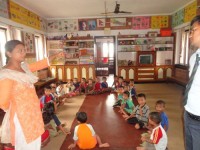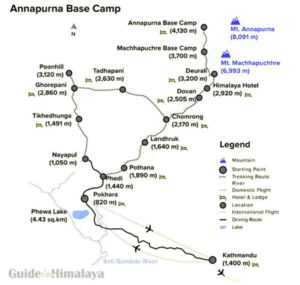King Birendra Bir Bikram Shah Dev
Born on December 28, 1945 at Narayanhiti Royal Palace, King Birendra Bir Bikram Shah Dev ruled Nepal since 31 January, 1972 to 1 June, 2001 when he was victimized in the Royal Nepalese Massacre said to be carried by his eldest son the then Crown Prince Dipendra Bir Bikram Shah Dev. King Birendra is the most internationally known Nepalese king in the history of modern Nepal.
He was also the first Nepalese monarch to receive a formal education and had spent eight years studying at St Joseph’s College in Darjeeling, India. His father ascended the throne on 13 March 1955, after the death of his grandfather King Tribhuvan and it was then, that he was declared the Crown Prince of Nepal. King Birendra enrolled at Eton College in the United Kingdom in 1959 and he returned to Nepal after studying here until 1964. In Nepal, he began to explore the country by travelling to in disguise to remote parts of the country where he lived on whatever was available in the villages and monasteries. He went to the University of Tokyo to complete his education before studying political theory at Harvard University from 1967 to 1968. One who enjoyed traveling, King Birendra has been on trips to Canada, Latin America, Africa and many other Asian countries. He was also interested in art collection, was a supporter of Nepalese crafts people and artists and had also learned to fly helicopters.
He got married to Aishwarya Rajya Laxmi Devi Rana on 27 February 1970 and their wedding was considered to be one of the most lavish Hindu nuptial ceremonies in the history (cost $ 9.5 million). They had three children, Crown Prince Dipendra, Princess Shruti and Prince Nirajan.
King Birendra Bir Bikram Shah Dev ascended the throne on 31 January 1972 after the death of his father and became the King of the country where absolute monarchy and Panchayat system was practiced. The believer in democracy, he restored the democracy in the country abolishing the Panchyat system of governance imposed by his father and the country had constitutional monarchy rather than absolute. In 1980, he was made British Field Marshal.
The quarrels between various political parties and numerous social problems gave way to the Nepalese Civil War resulting in the conflict between Maoist rebels and the government forces that lasted since 1996 to 2006 killing thousands of innocents. On the dreadful night of 1 June 2001, during a Royal dinner, the King along with the Royal family (Queen, prince and princess along with king’s three siblings) were massacred. Crown Prince Dipendra was, then, declared as the King of Nepal but he died within three days of self-inflicted gunshots wound during the massacre. After that, Prince Gyanendra, King Birendra’s brother succeeded the throne.
The reports based on the statements of the eyewitness and the investigation led by two-men committee of Chief of the Supreme Court Keshav Prasad Upadhaya and the speaker of the House of Representatives Taranath Ranabhat confirmed that the then Crown Prince Dipendra was the gunman, although most of the Nepalese believes otherwise. However, a detailed investigation of the case is impossible as the site of the massacre, Tribhuvan Sadan was demolished by the Gyanendra regime.







